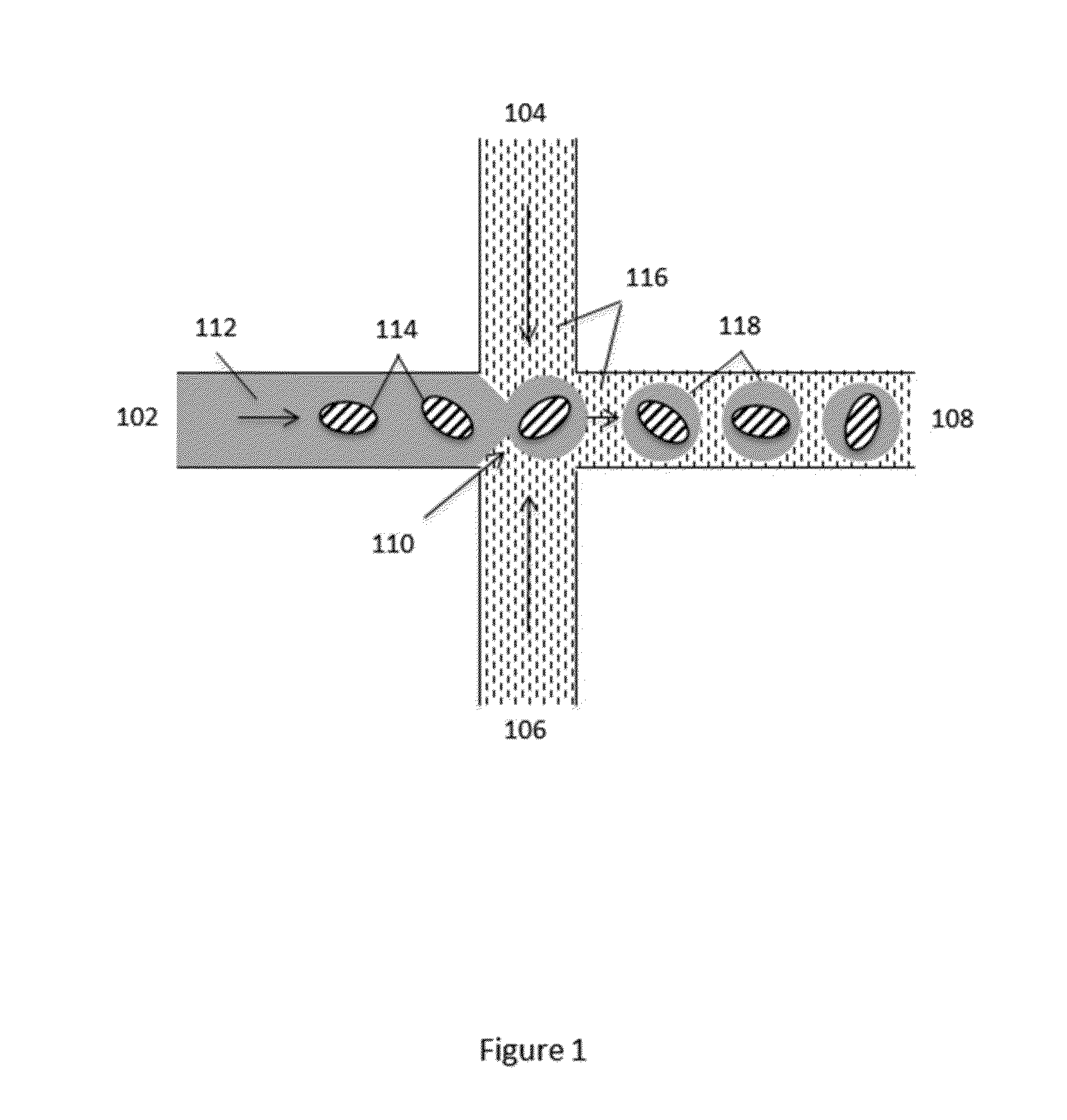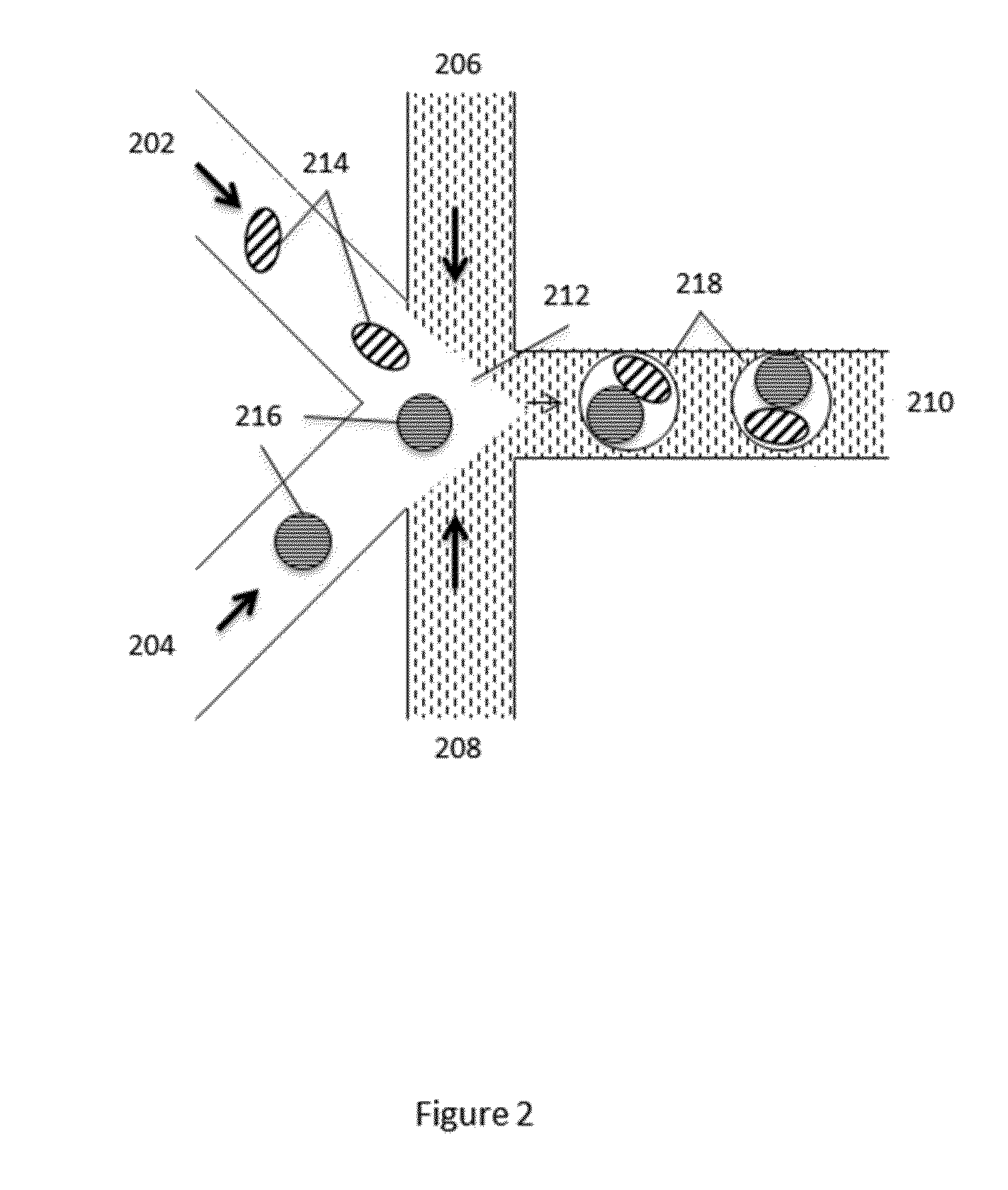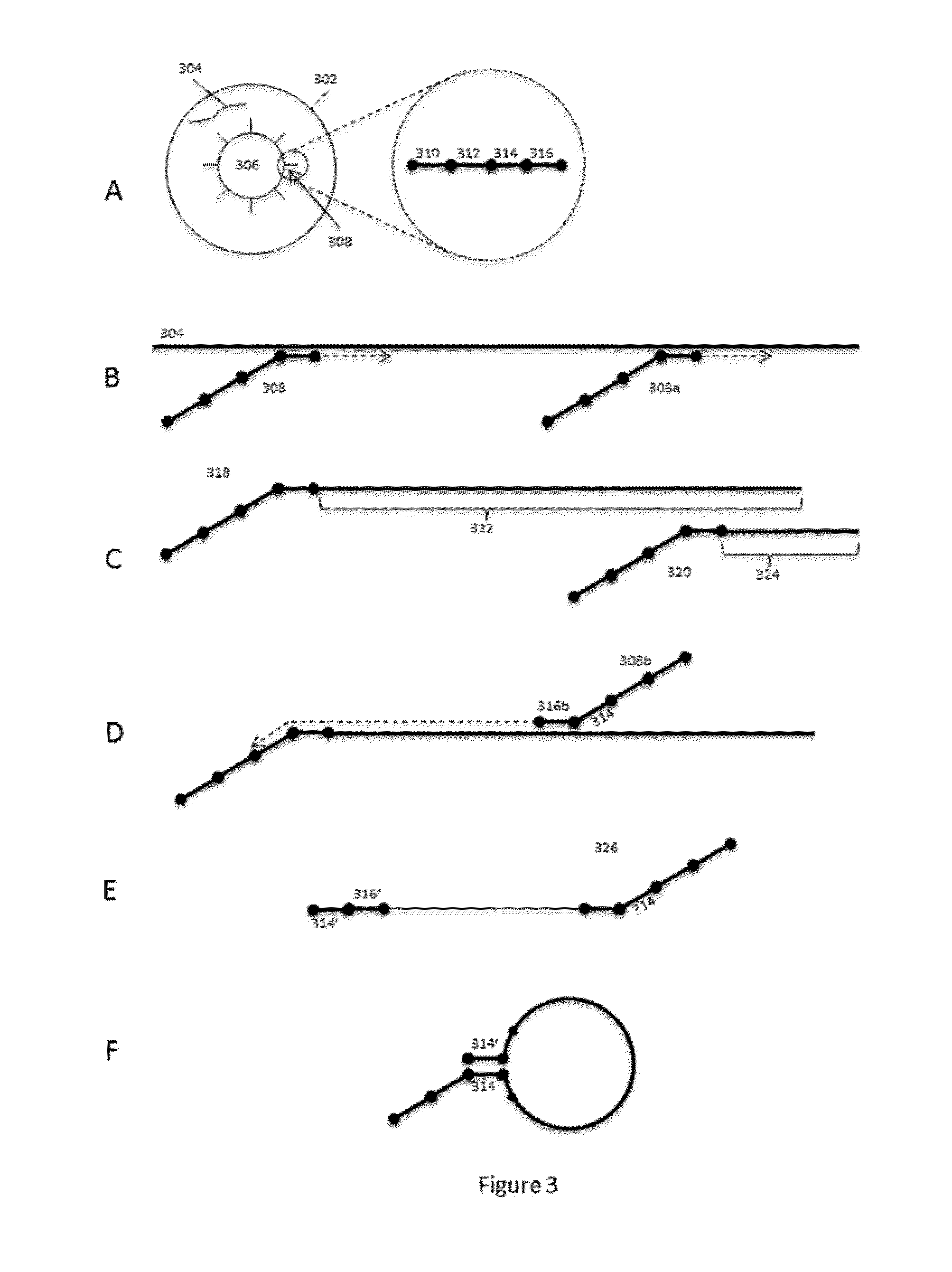Methods of Analyzing Nucleic Acids from Individual Cells or Cell Populations
- Summary
- Abstract
- Description
- Claims
- Application Information
AI Technical Summary
Benefits of technology
Problems solved by technology
Method used
Image
Examples
example i
Cellular RNA Analysis Using Emulsions
[0159]In an example, reverse transcription with template switching and cDNA amplification (via PCR) is performed in emulsion droplets with operations as shown in FIG. 9A. The reaction mixture that is partitioned for reverse transcription and cDNA amplification (via PCR) includes 1,000 cells or 10,000 cells or 10 ng of RNA, beads bearing barcoded oligonucleotides / 0.2% Tx-100 / 5× Kapa buffer, 2× Kapa HS HiFi Ready Mix, 4 μM switch oligo, and Smartscribe. Where cells are present, the mixture is partitioned such that a majority or all of the droplets comprise a single cell and single bead. The cells are lysed while the barcoded oligonucleotides are released from the bead, and the poly-T segment of the barcoded oligonucleotide hybridizes to the poly-A tail of mRNA that is released from the cell as in operation 950. The poly-T segment is extended in a reverse transcription reaction as in operation 952 and the cDNA transcript is amplified as in operation...
example ii
Cellular RNA Analysis Using Emulsions
[0161]In another example, reverse transcription with template switching and cDNA amplification (via PCR) is performed in emulsion droplets with operations as shown in FIG. 9A. The reaction mixture that is partitioned for reverse transcription and cDNA amplification (via PCR) includes Jurkat cells, beads bearing barcoded oligonucleotides / 0.2% TritonX-100 / 5× Kapa buffer, 2× Kapa HS HiFi Ready Mix, 4 μM switch oligo, and Smartscribe. The mixture is partitioned such that a majority or all of the droplets comprise a single cell and single bead. The cells are lysed while the barcoded oligonucleotides are released from the bead, and the poly-T segment of the barcoded oligonucleotide hybridizes to the poly-A tail of mRNA that is released from the cell as in operation 950. The poly-T segment is extended in a reverse transcription reaction as in operation 952 and the cDNA transcript is amplified as in operation 954. The thermal cycling conditions are 42° C...
example iii
RNA Analysis Using Emulsions
[0162]In another example, reverse transcription is performed in emulsion droplets and cDNA amplification is performed in bulk in a manner similar to that as shown in FIG. 9C. The reaction mixture that is partitioned for reverse transcription includes beads bearing barcoded oligonucleotides, 10 ng Jurkat RNA (e.g., Jurkat mRNA), 5× First-Strand buffer, and Smartscribe. The barcoded oligonucleotides are released from the bead, and the poly-T segment of the barcoded oligonucleotide hybridizes to the poly-A tail of the RNA as in operation 961. The poly-T segment is extended in a reverse transcription reaction as in operation 963. The thermal cycling conditions for reverse transcription are one cycle at 42° C. for 2 hours and one cycle at 70° C. for 10 min. Following thermal cycling, the emulsion is broken and RNA and cDNA transcripts are denatured as in operation 962. A second strand is then synthesized by primer extension with a primer having a biotin tag a...
PUM
| Property | Measurement | Unit |
|---|---|---|
| Fraction | aaaaa | aaaaa |
| Biodegradability | aaaaa | aaaaa |
| Degradation properties | aaaaa | aaaaa |
Abstract
Description
Claims
Application Information
 Login to View More
Login to View More - R&D
- Intellectual Property
- Life Sciences
- Materials
- Tech Scout
- Unparalleled Data Quality
- Higher Quality Content
- 60% Fewer Hallucinations
Browse by: Latest US Patents, China's latest patents, Technical Efficacy Thesaurus, Application Domain, Technology Topic, Popular Technical Reports.
© 2025 PatSnap. All rights reserved.Legal|Privacy policy|Modern Slavery Act Transparency Statement|Sitemap|About US| Contact US: help@patsnap.com



